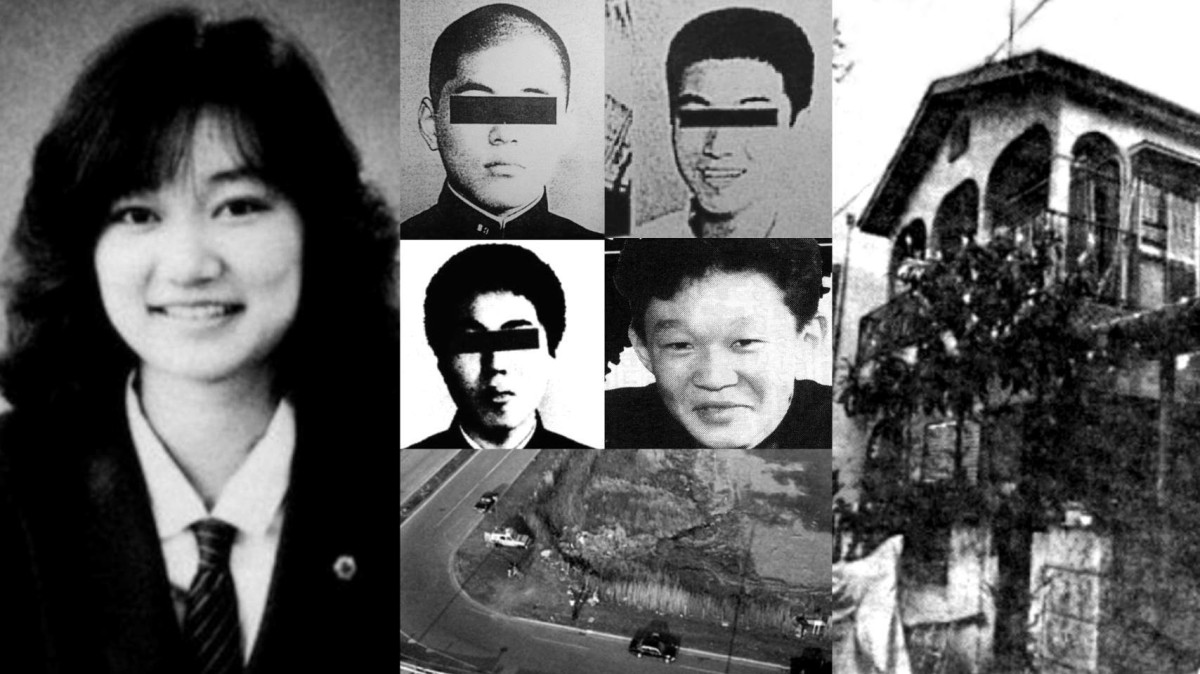Junko Furuta: The Tragic Story - What Happened?
Could the darkest corners of human cruelty ever be fully illuminated? The story of Junko Furuta, a name etched in infamy, serves as a harrowing testament to the depths of depravity and the devastating consequences of unchecked violence, leaving an indelible mark on the collective consciousness.
On January 18, 1971, in the city of Misato, Saitama Prefecture, Japan, Junko Furuta was born. From her early years, she was raised in a home shared with her parents and two brothers. She attended high school in Misato, navigating the typical social landscape of adolescence. However, her life would take a horrific turn, thrusting her into an ordeal that remains one of the most disturbing and widely discussed criminal cases in the nation's history.
| Full Name: | Junko Furuta |
| Date of Birth: | January 18, 1971 |
| Place of Birth: | Misato, Saitama Prefecture, Japan |
| Age at Time of Abduction/Murder: | 17 years old |
| Education: | High School Student |
| Known For: | Victim of a brutal crime involving kidnapping, torture, and murder. |
| Key Events: |
|
| Perpetrators: | Hiroshi Miyano, Jo Ogura, Shinji Minato, Yasushi Watanabe |
| Legal Aftermath: |
|
| Legacy: |
|
| Reference: | Wikipedia: Murder of Junko Furuta |
The sequence of events that led to Junko Furuta's tragic fate began with a casual encounter. Hiroshi Miyano, the instigator, instructed Nobuharu Minato to force Furuta off her bicycle, setting in motion a chain of events that would culminate in unimaginable suffering. The initial act of aggression, an attempt to assert dominance or perhaps driven by something more sinister, marked the beginning of her nightmare.
- Movie News Reviews Bollywood Tollywood More Find On Justwatch
- Try Undress Ai Free Today Remove Clothes With Ai
It was November of 1988 when Junko Furuta, a Japanese high school student, vanished. She was only 17 years old. Her disappearance soon gave way to the horrifying truth: she had been abducted and thrust into a living hell. For over 40 days, she was held captive, subjected to unimaginable torment. The perpetrators, four teenagers: Hiroshi Miyano, Jo Ogura, Shinji Minato, and Yasushi Watanabe, orchestrated a campaign of cruelty that defied comprehension.
Once imprisoned in Shinji Minato's home, the ringleader began inviting others to participate in the sexual assault and torture of the teenager. The details of her ordeal are too graphic to fully enumerate; however, various sources offer a shocking summary of what Furuta was forced to endure. The physical and psychological abuse was unrelenting. The captors systematically stripped away her dignity and her will to live. The house became a place of endless torment.
The perpetrators' actions were a blend of calculated cruelty and opportunistic sadism. The motivation behind their actions remains a subject of debate. Some believe that the act was fueled by a complex interplay of factors, including a desire for power, peer pressure, and a complete disregard for human life. Others argue that it was rooted in a deeper form of evil. Regardless of the precise cause, the consequences were nothing short of catastrophic.
- Vegamovies Your Guide To Free Movies Streaming Options
- 2025 Movie Guide Watch Online Reviews More Movierulz Beyond
The captors subjected her to extreme forms of physical and sexual assault. The torture was prolonged, brutal, and meticulously designed to inflict the maximum amount of pain and humiliation. This included physical beatings, burns, forced consumption of substances, and other depraved acts. This heinous treatment continued for a full 44 days, a period that must have felt like an eternity for Furuta. The perpetrators physically abused the teenage girl for over a month.
Amidst the unfolding horror, there were also significant failures of the systems designed to protect the vulnerable. The initial search efforts were hampered. Although the police began investigating her disappearance two days after she was reported missing, the investigation was prematurely shut down. The authorities accepted a dubious explanation from her family, based on a phone call in which she supposedly stated she had left home. This early misstep allowed the perpetrators to continue their crimes without significant intervention.
Junko Furuta's story did not end with her disappearance. The aftermath of the crime, including the legal proceedings and the societal reactions, is a significant aspect of the tragedy. Despite the severity of their crimes, the perpetrators received sentences that were surprisingly lenient. This led to outrage and condemnation, underscoring the perceived inadequacies of the Japanese juvenile justice system at the time. The leniency was partly due to their minor status and their claims of remorse.
The sentencing decisions triggered a wave of debate and public condemnation. Many critics cited the perceived flaws in the justice system, particularly regarding the treatment of juvenile offenders who commit heinous acts. The case became a focal point for discussions about the balance between rehabilitation and punishment, and the appropriate response to severe crimes.
The trial and sentencing shed light on the societal failures that contributed to the tragedy. This included the lack of effective intervention and protection mechanisms. The failure of the authorities to adequately investigate the initial disappearance, and the cultural influences that may have normalized or tolerated violent behavior. These aspects of the case brought into sharp focus the need for a more comprehensive approach to preventing such crimes.
The brutal details of Junko Furuta's ordeal sent shockwaves of revulsion and anger throughout Japan and beyond. The case sparked public discussions about violence, the role of the justice system, and the responsibility of society to protect its most vulnerable members. Junko Furuta's case remains a topic of ongoing discussion, a grim reminder of the fragility of life and the depths of human depravity.
The impact of this case extends beyond the immediate legal and social repercussions. Junko Furuta's tragic story remains one of the most disturbing criminal cases in Japan, highlighting the horrors of bullying, torture, and the challenges of the justice system. The case is a stark reminder of the importance of vigilance, empathy, and a commitment to protecting those who are at risk. It emphasizes the importance of community support and the need for robust systems to address and prevent such atrocities.
The story is a painful reminder of the devastating consequences of violence and the importance of addressing the root causes of such crimes. The case is a catalyst for reflection on the role of society, the justice system, and the community in protecting vulnerable individuals. The legacy of Junko Furuta's story is not just one of tragedy, but also a call to action, urging us to strive for a world where such horrors can never be repeated.
The narrative of Junko Furuta includes multiple narratives, each illuminating different facets of her tragic story. There are accounts of the abductors' cruel actions, descriptions of the failures of the legal system, and insights into the social environment that allowed this tragedy to occur. By examining each of these narratives, it is possible to develop a thorough understanding of this complex case.
Junko Furuta was a regular girl, just 17 years old when she vanished. She was living her teenage years in Misato, Saitama Prefecture, where she was born on January 18, 1971. She grew up with her family in Misato, which included her parents and siblings. Her captors subjected her to unimaginable, unspeakable suffering, suffering you wouldn't wish on your worst enemy. From a girl's perspective, she was a student at a high school in Misato, in the prefecture of Saitama, Japan. She was an active and beautiful teenager who liked a lot of attention, which made some people jealous. This simple fact made her the target of her aggressors.
The story of Junko Furuta reveals the darkness that can exist within society. It exposes the cruel realities of human behavior and the devastating consequences of unchecked violence. It stands as a warning about the dangers of turning a blind eye to abuse and the importance of speaking up against injustice. Her case is a reminder that empathy, compassion, and vigilance are essential in preventing such tragedies from happening again.
The story also highlights the ways in which society can fail to protect its most vulnerable members. This includes the failures of law enforcement, the justice system, and the community at large. It highlights the need for a comprehensive approach to crime prevention, including addressing the root causes of violence, providing support for victims, and holding perpetrators accountable for their actions.
The importance of this case is not just about the details of the crime. Junko Furuta's story is a call for increased public awareness regarding the risks of bullying, the dangers of violent crime, and the importance of standing up against injustice. It serves as a catalyst for change, prompting reflection on the need to improve the criminal justice system and promote a safer society for all.
Article Recommendations
- Vegamovies Your Guide To Free Movies Streaming Options
- Where To Watch Alternatives Your Guide To Vega Vegamoviesist



Detail Author:
- Name : Miss Tyra Quitzon
- Username : general.senger
- Email : aiyana.pacocha@krajcik.com
- Birthdate : 1989-08-02
- Address : 9164 O'Kon Motorway Alethahaven, MT 07870-1168
- Phone : +1-513-650-9062
- Company : Harber, Weber and Block
- Job : Fence Erector
- Bio : Dolor sint libero sint qui repellendus sit. Eos provident nisi repellat. Minus consequatur nesciunt dolores adipisci.
Socials
tiktok:
- url : https://tiktok.com/@gregoria_barton
- username : gregoria_barton
- bio : Provident iste ipsa aut eveniet facere laborum.
- followers : 3043
- following : 2882
twitter:
- url : https://twitter.com/gregoria_barton
- username : gregoria_barton
- bio : Impedit et veniam dolorum quisquam distinctio sed. Voluptas sint velit quis sequi. Dolor aut impedit iusto corrupti totam.
- followers : 5581
- following : 91
facebook:
- url : https://facebook.com/gregoria.barton
- username : gregoria.barton
- bio : Doloribus quo nulla recusandae maiores. Unde quo iste qui quam vel magnam.
- followers : 5270
- following : 2140
linkedin:
- url : https://linkedin.com/in/gregoria7466
- username : gregoria7466
- bio : Est culpa est facere natus officiis ut.
- followers : 1003
- following : 409
instagram:
- url : https://instagram.com/gregoria_dev
- username : gregoria_dev
- bio : Dolores nemo quisquam deleniti dignissimos nostrum. Itaque consectetur placeat aut quas.
- followers : 534
- following : 155